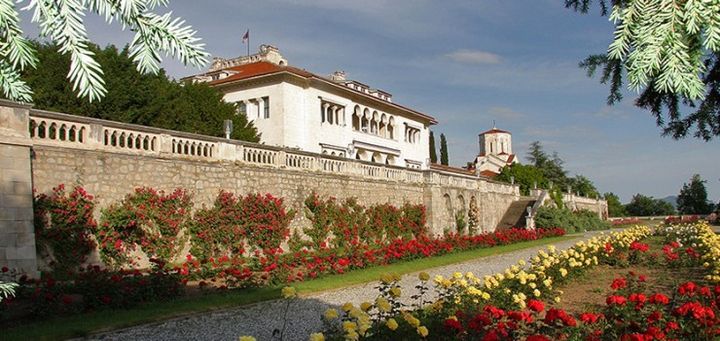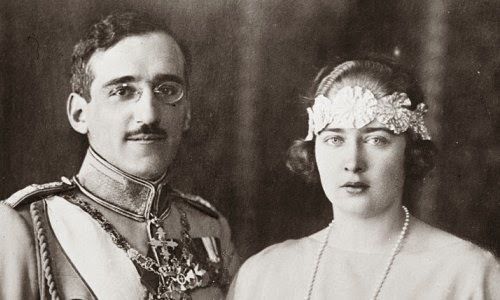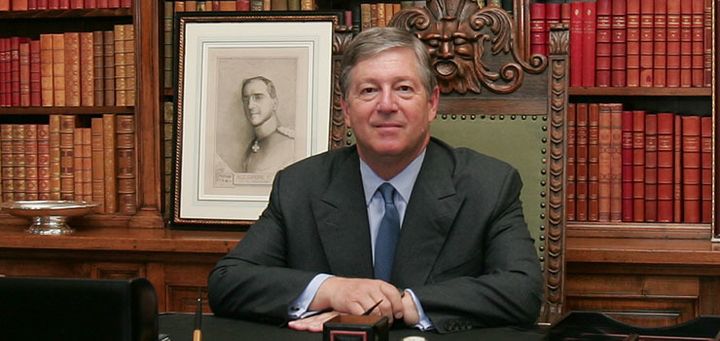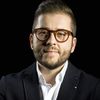
HRH Prince Philip and Miss Danica Marinkovic
On October 7th, the wedding of HRH Prince Philip of Serbia and Ms. Danica Marinkovic, will mark the first ever Royal wedding in Serbia since 1922, when King Alexander I married Queen Maria of Romania. (Yes, Serbia was once a monarchy. Check the Royal Family’s official website for more info about the Karadjordjevic Dynasty. )

With the growing interest about the wedding in the world media, I sat down with the Serbian Royal Family and asked them to share with me 10 things about their amazing home or as we call it, the Serbian Royal Palace.
The Royal Palace was built between 1924 and 1929 with the private funds of His Majesty King Alexander I(the grandfather of HRH Crown Prince Alexander). The Royal Palace was the home of King Alexander I and King Peter II (the father of Crown Prince Alexander). Today The Royal Palace is the home of Crown Prince Alexander and his family.
1. The Royal Palace lays on the peak of Dedinje Hill and can be seen from several parts of Belgrade.

King Alexander and Queen Maria of Romania
2. At the time when the Royal Palace was finished, in 1929, there were just a few scattered villas in Dedinje, which wasn’t even considered to be a part of Belgrade. It was only when the citizens learned that HM King Alexander I of Yugoslavia was going to build his villa there that everybody wanted to live near the King and that is how Dedinje became a proper “Beverly Hills” of Belgrade.
3. If you tell a taxi driver “take me to the Royal Palace” he or she will most likely ask you “You mean the White Palace?”, after which you can engage in lengthy explanation or just go along by saying “Yes, the White Palace”. Everybody in Belgrade knows about the White Palace, very few people are aware that there are two palaces within the Royal Compound and that the Royal Palace was actually the home of the Royal Family.

4. The reason for that is the fact that the White Palace was declared the office of our communist republic post-World War Two lifelong president/dictator.
5. The entire Royal Compound is still confiscated property, based on the notorious communist decree of 1947, by which the entire private property of the Royal Family was confiscated, and all its members were declared “the enemies of the state”, including HRH Crown Prince Alexander who was two at the time! The Royal Compound and all the other private properties of the King were built thanks to the income from the gold mine that the had bought.

HRH Crown Prince Alexander
6. The Royal Palace kitchen is connected to the kitchen by a 90 m long tunnel. Above the kitchen the offices of the Royal Palace Fund is located, the tunnel is still there!
7. Today there are three paintings in the Royal Compound Art Collection, which, at the time they were brought to Belgrade, were believed to be the works of Rembrandt van Rijn. However, all art historians almost immediately agreed those were the works of some of the Rembrandt’s students – but! There was the fourth, true Rembrandt’s work – “Quintus Fabius Maximus” – which disappeared in the spring of 1941, when HM King Peter II of Yugoslavia (father of Crown Prince Alexander), following his Government’s decision, left the country, but never abdicated.

8. The first object within the private estate of HM King Alexander I (the Royal Compound) was the so called “Thatched House”, which for a while served as a private school for the King’s three sons – Crown Prince Petar, Prince Tomislav and Prince Andrej. After the King’s tragic assassination together with the French foreign minister in 1934 in Marseille, his wife HM Queen Maria of Yugoslavia used it as her art studio.
9. HM King Alexander I of Yugoslavia’s private estate in Dedinje was an economically independent entity. The Royal Compound used to have its own small power plant, greenhouse and even a chicken farm!

10. After fifty years what was known as the forbidden city, The Royal Compound was for the first time in its history opened by Crown Prince Alexander for visitors in the autumn of 2002, a year after the Royal Family came back to Serbia.
For more info about the Palace and its history, you can visit the Palace’s official website.
